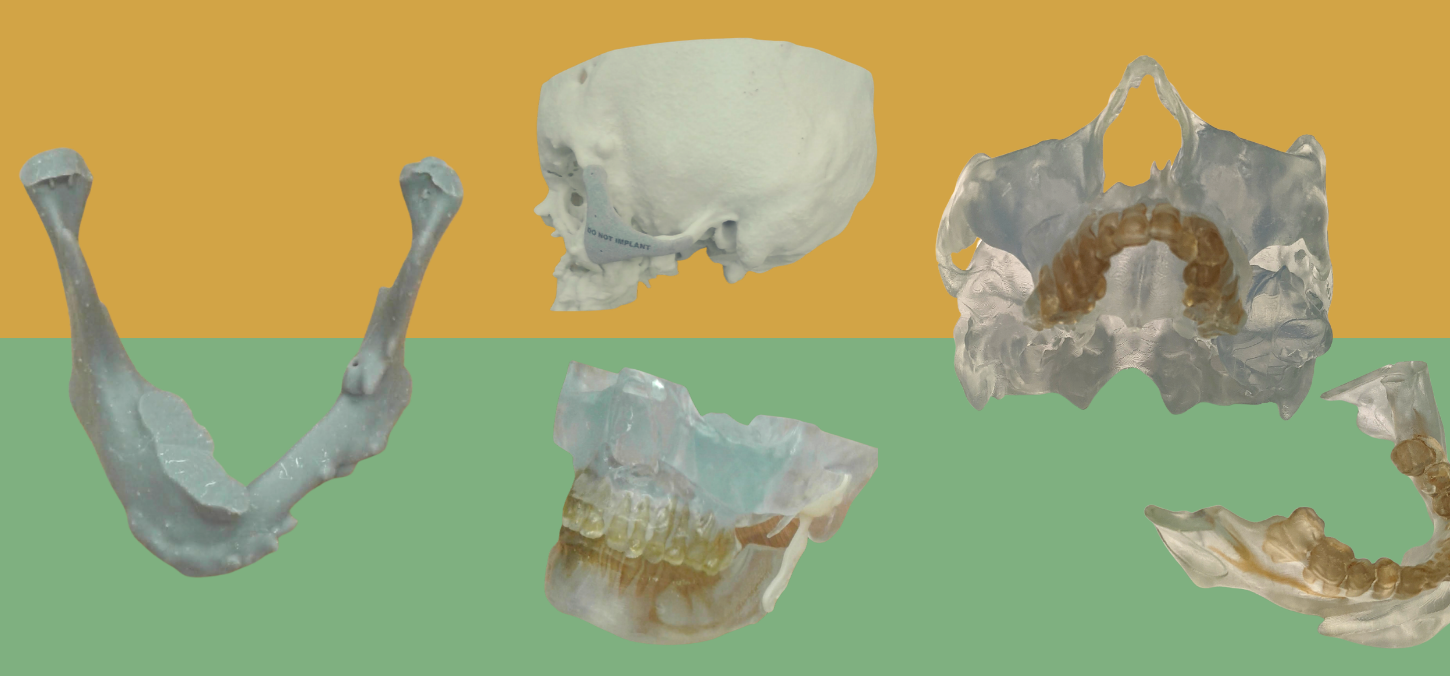
New technology creates smiles
By Diane Peters
Four years ago, an Afghani teenager was shot in the face by a terrorist organization. Soon after, her family was able to come to Canada as refugees. Now, after years of suffering — the 18-year-old Ottawa resident is still unable to eat solid food or speak properly — she will have surgery to repair her face, jaw and teeth.
“It’s quite disfiguring,” says Marco Caminiti 9T8 Dip OMFS, assistant professor, graduate program director of oral and maxillofacial surgery at the Faculty of Dentistry, of her injuries.
Caminiti will be a key player on the multidisciplinary surgical team that will restore function and aesthetics to this girl’s face, jaw and teeth, giving her a chance for a better life. After he rebuilds her jaw using pieces of her iliac crest, she’ll get dental implants and prosthetic teeth, plus have work done by a plastic surgeon.
For the complex procedure, which will take place in April, Caminiti will work with a surgical guide he actually made himself.
That’s thanks to a new 3D printer and computer suite at the Faculty’s OMFS lab. Normally, Caminiti would send intraoral scans and other measurements to a third-party company that would make him a guide to help him reconstruct the jaw and other facial bones.
Such guides cost about $1,000 and entail phone consultations with staff engineers to get it right.
But the new, $25,000 system, which was made possible thanks to a donation by two former OMFS residents, plus money from the Oral Surgery Alumni Fund, allows Caminiti and his students to quickly and easily make their own guides. It’s been a valuable learning tool for OMFS graduate students and interns and will lead to ongoing cost savings for the Faculty.
“They love the technology,” Caminiti says of students. Postdoctoral fellow Balraj Kang has been particularly key in figuring out the scanner and the complex technology behind it. With such systems becoming more common in practices and hospitals, it’s important that OMFS students become familiar with them.
Keeping costs low matters for complex surgeries. While this particular procedure will be covered under a special government program and is being organized at Holland Bloorview Kids Rehabilitation Hospital, families often have to pay out of pocket for surgical guides.
That’s a burden when such surgeries often come with other expenses. “They’re often paying fees of $5,000 or $6,000 for orthodontics and implants on top of that,” says Caminiti.
Caminiti also likes the flexibility of the DIY approach. “We have full control. If I lose the guide, they can print off another quite quickly.”
Instead of waiting for a company to make and ship them a completed guide, Caminiti says his students can do it all much faster. The first guide they ever made took them two weeks. For a recent one, students input scans and other data and had a guide complete in four hours.
“I also have a better degree of quality control,” he says.
This new approach to creating guides is just part of the evolution of the OMFS profession. “Ten years ago, I would not use a guide during the operation,” recalls Caminiti. Now, more precise scans and millimetre-perfect guides allow for quicker, more affordable and more successful oral and maxillofacial surgeries.
For more insights into Caminiti’s life-changing work, watch this heartwarming news clip from CTV about a similar surgery.